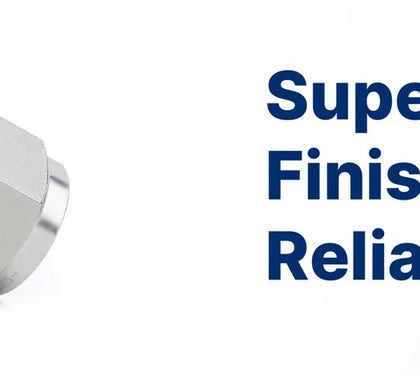In the dynamic landscape of fluid systems, the compatibility and interchangeability of fittings play a pivotal role in ensuring seamless operations and flexibility. Two prominent players in the fittings arena, Superlok and Hylok, have garnered attention for their quality and performance. While each brand boasts its unique features and advantages, an intriguing question arises: Are Superlok and Hylok fittings truly interchangeable? Let's delve into this topic to unravel the nuances.
Understanding Interchangeability
Interchangeability refers to the ability of components from different manufacturers to be used interchangeably without compromising functionality or performance. In the context of fittings, it entails compatibility in dimensions, threading, sealing mechanisms, and overall design. Achieving interchangeability is crucial for versatility, maintenance convenience, and cost-effectiveness in fluid systems.
Exploring Superlok and Hylok
Both Superlok and Hylok have established themselves as reputable suppliers of fittings, catering to diverse industries and applications. Superlok is renowned for its precision engineering, high-quality materials, and comprehensive product range. Similarly, Hylok has earned recognition for its reliability, innovation, and commitment to customer satisfaction.
Interchangeability Assessment
While Superlok and Hylok fittings may share similarities in design and functionality, achieving true interchangeability requires meticulous attention to detail. Factors such as thread type, size, tolerance levels, and sealing mechanisms must align seamlessly to ensure compatibility.
In practice, many users have successfully interchanged Superlok and Hylok fittings in certain applications. However, it's essential to exercise caution and conduct thorough compatibility assessments before substitution. Factors such as system pressure, temperature, media compatibility, and regulatory requirements must be taken into account to mitigate risks and ensure optimal performance.
Considerations for Interchangeability
-
Dimensional Compatibility: Assessing the dimensional specifications of fittings is crucial to determine interchangeability. While Superlok and Hylok may offer fittings of similar sizes, variations in tolerances or thread configurations could affect compatibility.
-
Material Compatibility: Compatibility in material composition is vital to prevent galvanic corrosion or chemical reactions when interchanging fittings. Both Superlok and Hylok offer fittings in stainless steel and other materials, but ensuring compatibility with the intended application is paramount.
-
Sealing Mechanisms: Paying close attention to sealing mechanisms, such as O-rings or compression fittings, is essential for achieving leak-free connections. While Superlok and Hylok may employ similar sealing methods, variations in design or materials could impact interchangeability.
Conclusion
In conclusion, while Superlok and Hylok fittings may exhibit similarities and share certain interchangeable qualities, achieving seamless interchangeability requires careful assessment and consideration of various factors. While users may find success in substituting fittings in specific scenarios, exercising caution, and consulting with industry experts is advisable to mitigate risks and ensure compatibility.
Ultimately, both Superlok and Hylok remain trusted providers of fittings, each offering unique features and advantages. Whether opting for Superlok, Hylok, or a combination of both, prioritizing compatibility, quality, and performance is essential to uphold the integrity and efficiency of fluid systems. By embracing interchangeability responsibly, users can harness the benefits of flexibility and convenience while maintaining operational excellence.


